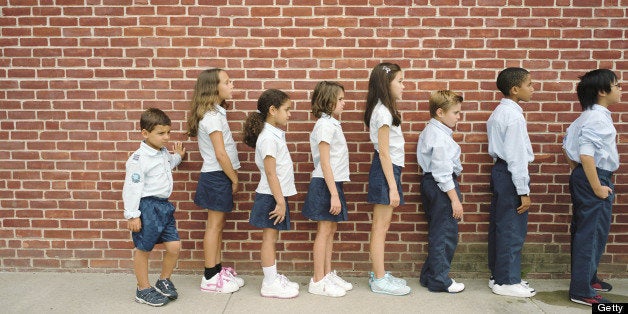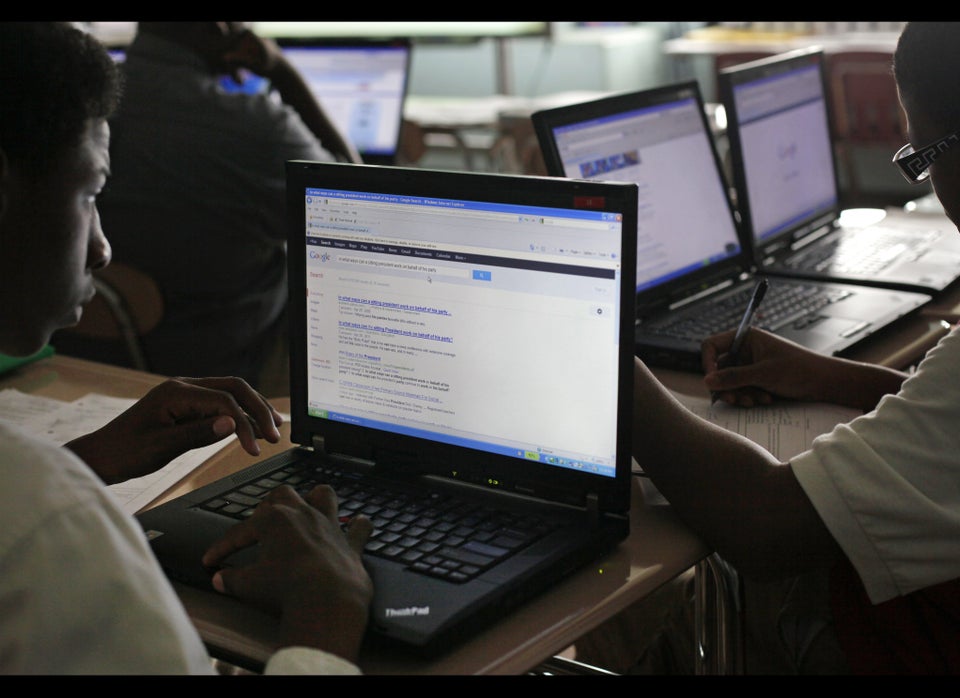
There are 6,000 charter schools nationwide, more than 1,000 in California and upwards of 250 in Los Angeles.
It turns out, that's not enough.
A report released Thursday by the National Alliance for Public Charter Schools estimates that 520,000 students nationwide are on a charter school waiting list, including 50,000 kids in California hoping for a spot.
And more than 15,000 students are wait-listed for seats in Los Angeles Unified, which already has a charter enrollment of 100,000 -- the most of any district in the country.
" 'Charter' has become a brand -- a sign that something different and special is going on at a school," said Corri Ravare, managing regional director of the California Charter Schools Association, which contributed to the study. " 'Charter' has become synonymous with quality."
More than 4 percent of American kids -- 2.3 million students -- are enrolled in charters, which supporters tout as publicly funded alternatives to private schools. That concentration roughly doubles to 8 percent in California, with an estimated 471,000 charter students.
About 15 percent of Los Angeles Unified are enrolled in charters -- both independently run schools and affiliated charters, a hybrid model unique to LAUSD that gives traditional schools greater autonomy while retaining ties to the district.
Nine traditional campuses in LAUSD are slated to convert to charters this fall, when nearly two dozen new startups are scheduled to open. Charter advocates say the demand for charters is keeping pace with the new seats added each year.
"Every year, we have more applications than available seats," said Catherine Suitor, chief development and communications officer for Alliance College Ready Public Schools. "Next year, we have approximately 3,300 open seats across 22 schools, and 2,700 (more) on our waiting list."
Alliance has focused its operations in South Los Angeles, with a network of campuses in low-income communities served by historically low-performing public schools. While LAUSD has made gains in improving academic achievement at its neighborhood schools, the successful track record of charter schools is still a powerful draw, Suitor said.
"Parents want choice, and they want the ability to send their kids to a quality school," she said. "Parents are paying attention and want what's best for their kids. It's up to us in public education to provide that."
LAUSD is the authorizing agency for most of the charters operating in its boundaries, with the Los Angeles County Office of Education overseeing the rest. Charter operators have to submit plans that detail enrollment and academic goals, which are used as guidelines when the school board decides whether to approve or deny a charter application or renewal.
Over the last three years, about 30 charters in LAUSD have closed down after falling short of their goals, said Jose Cole-Gutierrez, the chief of the district's Charter Schools Division.
"One of our key theories of change is to make sure that students have a portfolio of strong schools to choose from, and this includes very strong charter schools," he said.
While some education advocates see charters as a threat to the future of traditional campuses, Cole-Gutierrez sees opportunities for collaboration.
"Parents want great schools, but they're not necessarily looking at a model," he said. "We are interested in how charters can share their promising practices, but also how they can learn from us. It's all how we work together."
barbara.jones@dailynews.com
@LADNschools on Twitter ___
(c)2013 the Daily News (Los Angeles)
Visit the Daily News (Los Angeles) at www.dailynews.com
Distributed by MCT Information Services
